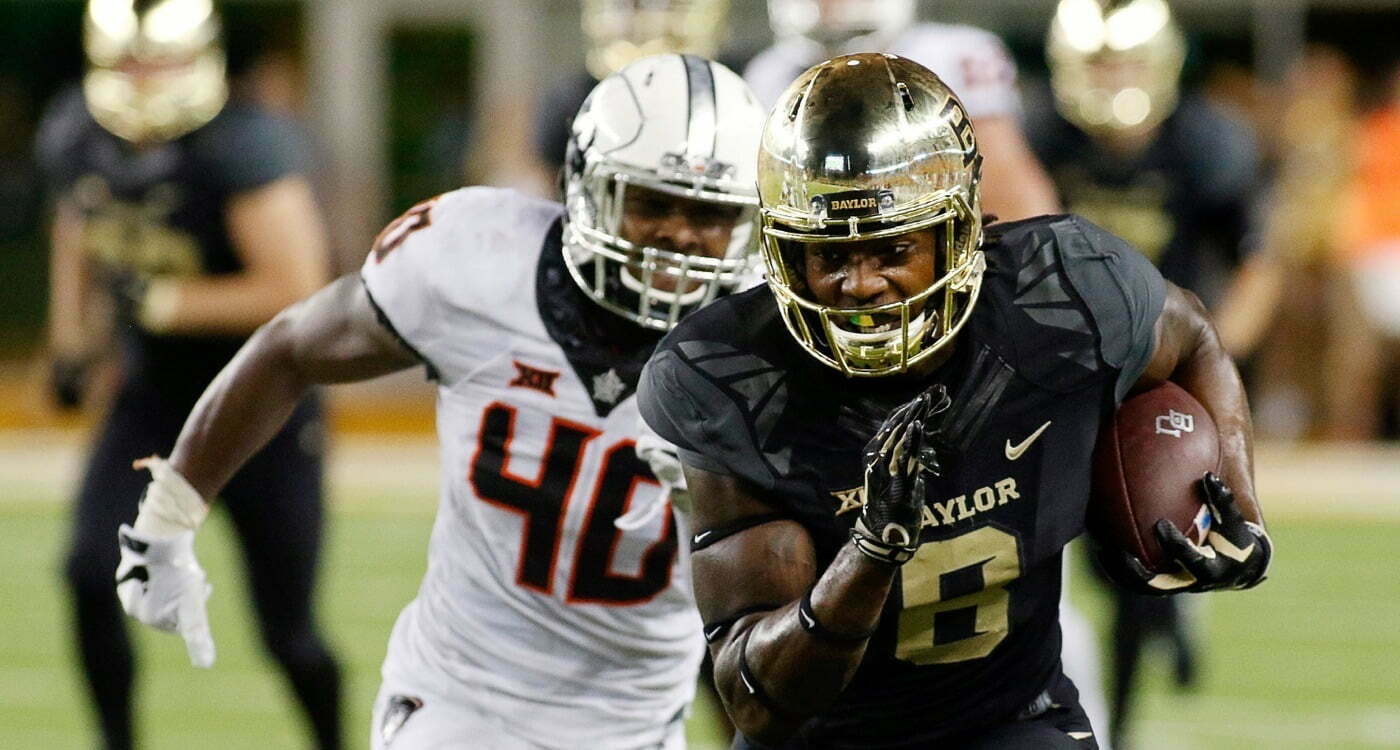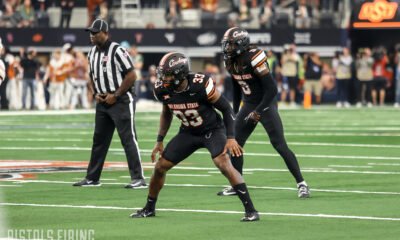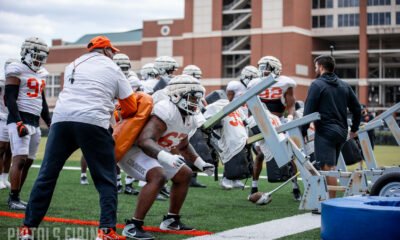Football
OSU’s Offense Is a Chameleon Which Means The Defense Needs To Change With It

We have seen five weeks of OSU football, and it feels like we have seen five different teams on the offensive side of the ball. It’s such a change from the “you know what you’re getting” days of Dana Holgorsen and Todd Monken. Holgorsen ran like seven plays on offense. They all almost always worked. There were variations, but it was quite simple.
Mike Yurcich is more NFL-like in his play-calling. Especially in his game-planning. He was essentially shouting this from the rooftop before the Texas game.
“They’re very well coached,” said Yurcich of Texas. “They have six returning starters so they have experience and some talent. They can rush the passer very well and they’re doing pretty well in the sack category. They have a lot of different fronts, a lot of different coverages, different blitz packages as well and they do a lot of things to disguise their looks. It’s a challenge going against Texas and everything that they do, so you have to be able to prepare your guys and make sure your package is complete against every situation and every look you’re going to get.
“They are very good at defending the inside run. They’re stout up front and their structures and fronts take away a lot of inside runs, whether they are gap schemes or zones. They do a great job from the interior standpoint and where they’ve been hurt is the outside run, but when you get them stretched, it’s time to attack them on the inside. You can’t be exclusive or have one-dimensional-type runs.”
You can’t be exclusive or have one-dimensional runs. Can you imagine Monken or Holgorsen saying something like this? Holgorsen probably snail mailed his playbook to opposing defensive coordinators just to get himself inside their heads and then ran all the plays he sent to them anyway. That’s how straightforward those teams were. They had a bunch of RPOs (™ Thomas Fleming), but they didn’t experience wild swings in offensive philosophy like it seems this one has.
To be clear, I don’t think one way is necessarily better than the other — they are just very different. Yurcich continued about this after the Texas game.
“Quite a few [plays were changed at the line of scrimmage],” said Yurcich. “I don’t know the exact number. The ability to get ourselves in the best situation possible, based on what their look was, was advantageous to us in that particular ballgame.”
The Baylor game just a week earlier was much different. OSU looked like a Big 10 team.
“We felt like the last two years we got in a track meet with them, and we couldn’t run with them,” said Mike Gundy. “And so we wanted to be able to establish some running game, use a little bit of clock with playing on the road.”
“We had so many long drives, man, gave our defense a chance to recover and game plan over on the sidelines and I think Coach Yurcich called an incredible game,” added Mason Rudolph. “A lot of successful runs, a lot of play action, a lot of different stuff. We’ve just got to finish when it counts and we’ll get better, though.”
Great! OSU looked strong on offense both weeks. Here’s the only problem with OSU changing its offensive plan drastically week in and week out: Philosophically, when your offense is changing from game to game, it puts pressure on your defense to change with it. But it doesn’t seem like OSU’s defense is changing.
Take the Baylor game for example. OSU was taking chances against Baylor to get picks and fumbles like it always does. It tried to stop the run at the expense of what seems to be an average secondary (and I’m being kind!) Glenn Spencer talks about that here. It got housed because Baylor is good on offense (and because OSU might not be good on defense).
The problem I had with this is that all you needed is, like, a stop or maybe two. You didn’t need picks like you usually do to flip a game. You should have been playing to get stops and not INTs against Baylor. OSU’s offense was manhandling that entire game, and its defense wasn’t situated properly from a philosophical standpoint. It was the same type defense it played against Pitt. But against Pitt, it got several more chances on defense to make something happen. It’s OK in a game like the Pitt game to take some chances on defense.
@Pokelahoma if you play slower I wouldn’t be so aggressive. To me an attacking defense makes sense with tempo because the bang or bust…
— Blake Huddleston (@CoachHuddleston) September 25, 2016
When your offense scores quickly like it was against Pitt and takes deep shots over and over again, you can completely flip a game based on one or two turnovers with your defense. Long TD. Pick. Another long TD. Bing-bang-boom. You’re up three scores. But when you’re controlling clock on offense (which OSU knew it was going to try and do against Baylor), all you want are stops because you know you can destroy a team’s will by munching up a 85-yard drive over nine minutes.
So I guess my thought in all of this is that the the offensive game-plan actually seems fine (fine enough to be top 40 in the country). I’m OK with it changing based on the type of defense another team plays. I just want the type of defense OSU plays to actually change with it.

-

 Hoops4 days ago
Hoops4 days agoUCF Transfer Marchelus Avery Commits to Oklahoma State
-

 Hoops4 days ago
Hoops4 days agoWashington Transfer Wesley Yates Visits Oklahoma State
-

 Football3 days ago
Football3 days agoOklahoma State Linebacker Donovan Stephens Enters Transfer Portal
-

 Football3 days ago
Football3 days agoSpring Football: A Defensive Line Switch That Could Utilize the Cowboys’ Playmakers






